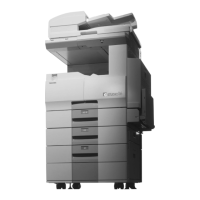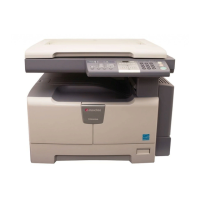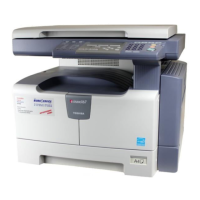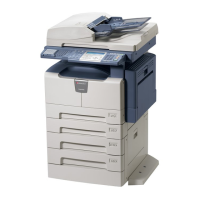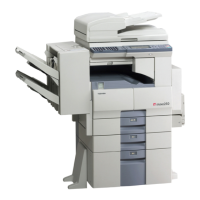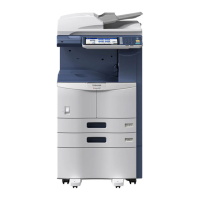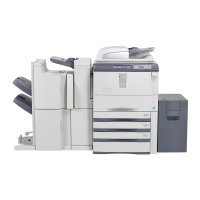
Do you have a question about the Toshiba e-Studio 1207 and is the answer not in the manual?
| Interface | USB 2.0 |
|---|---|
| Copy Resolution | 600 x 600 dpi |
| Scan Resolution | 600 x 600 dpi |
| Functions | Print, Copy, Scan |
| Print Resolution | 600 x 600 dpi |
| Print Resolution (Black) | 600 x 600 dpi |
| Paper Size | A5 |
| Connectivity | USB |
| Scanner Type | Flatbed |
Important notices for US users, software license, and warranty details.
Details regarding software licensing and ENERGY STAR compliance.
Guidance on recording machine serial number and purchase details.
Describes the content and purpose of the Quick Start Guide.
Information on Software Setup Guide and User's Manual (PC/Built-in).
Step-by-step instructions to download the User's Manual.
Explanation of safety symbols used throughout the manual.
Guidelines for safe operation and avoiding hazards.
Details on laser specifications and associated safety precautions.
Precautions for power connection and machine installation.
Safety advice regarding toner cartridges and consumables.
Procedures for powering the machine on, off, and restarting.
Identification of main power switch and power button.
Description of icons and functions on the home screen.
Explanation of touch panel interaction methods like tapping and sliding.
Step-by-step guide for printing from Windows applications.
Instructions for printing documents on Mac OS X systems.
Step-by-step guide for performing basic copy tasks.
Configuration of paper, ratio, and output settings for copying.
Adjusting exposure and settings for different original types.
Various other copy functions like margins and stamps.
Step-by-step guide for scanning documents to e-mail.
Configuring scan settings, resolution, and destination addresses.
Setting file formats, compression modes, and page settings for scans.
Options like Job Build, Slow Scan Mode, and others.
Overview of saving and managing scanned documents.
How to select folders and view hard disk drive usage.
Methods for displaying files in list or thumbnail views.
Actions available for selected files like send, move, and delete.
Step-by-step guide for configuring copy output.
Selecting output trays and using sort/group functions.
Configuring staple and offset functions for output.
Options for saddle stitching and various folding types.
Using the trimmer and punch modules for finishing.
Introduction to manual finishing modes and operations.
How to load paper and change output tray settings.
Correct placement of originals for specific finishing tasks.
How to staple and perform saddle stitching.
Details on folding types and punch module usage.
Setting copy counts and managing output trays.
General specs like resolution, gradation, paper sizes, and speeds.
Technical details for the automatic document feeder and bypass tray.
Specifications for various large capacity tray models.
Specifications for 50-sheet and 100-sheet finishers.
Specifications for 50-sheet and 100-sheet saddle stitch finishers.
Specifications for curl correction and relay units.
Technical details for the high capacity stacker.
Specifications for the MX-PNX4B punch module.
Specifications for the MX-PN13B punch module.
Details on network printing capabilities and protocols.
Details on network scanning capabilities and protocols.
Technical details for the trimming module.
Specifications for the folding unit.
Details for the inserter module.
Guidelines for storing paper, toner, and staples.
Instructions for storing toner cartridges correctly.
Details on compatible staple cartridges for finishers.
Information on the availability of spare parts and consumables.
Identification of various optional units available for the machine.
Capabilities of finishers, saddle stitch, and folding units.
Functionality of high capacity stackers and inserters.
Information on connecting and using large capacity paper trays.
How to interpret the machine's status indicator lights.
How the curl correction unit functions.
Forwarding sent/received data to the administrator.
Managing administrator and login passwords for security.
Measured noise emission levels for different operating modes.
Security measures for administrators to protect the equipment.
Security advice for end-users to ensure safe operation.

